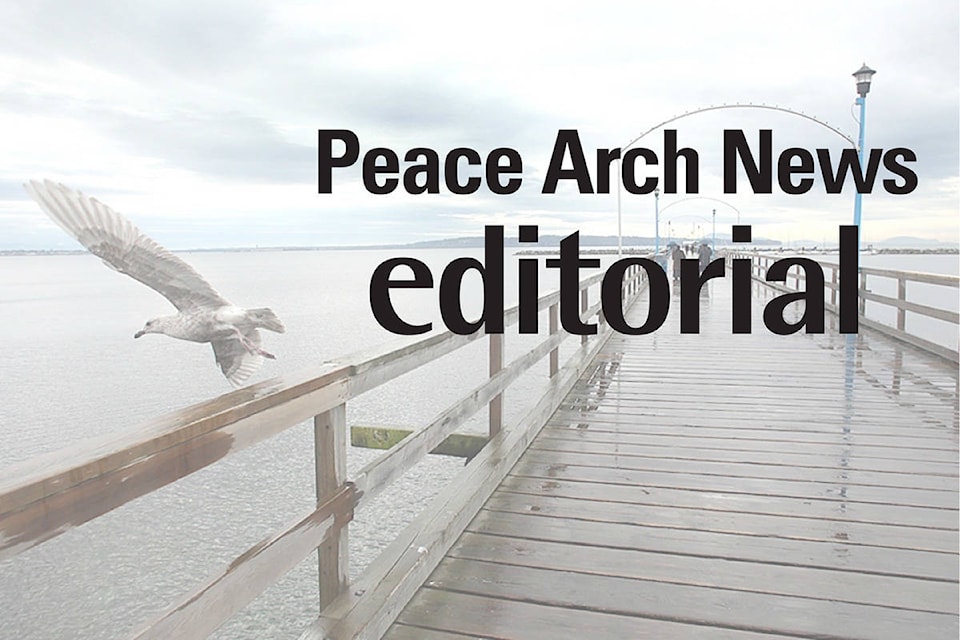As they say, everyone’s a critic.
White Rock’s latest public art – Andy Davies’ Coastal Cradle at Memorial Park and Illarian Gallant’s yet-to-be-installed Stande, celebrating the contributions of the women’s auxiliary to Peace Arch Hospital – seem to be running into a wall of flak from residents.
It’s clear that modern semi-abstract aluminum sculptures are not to everybody’s taste – Gallant’s work has been compared by some to a “coat rack,” while Davies’ structure was barely bolted to its base overlooking the pier when some online commenters began throwing the word “ugly” around.
READ MORE: Critics slam ‘broken eggbeater’, ‘hunk of metal’
In the modern era, public art – once dedicated to neo-classical idealizations of military and political figures – has evolved into an obsession with conceptual pieces that seem calculated to challenge viewers and promote dialogue. We can take issue with that, or not – perceptions of art are, after all, highly subjective.
But at the same time, we must be careful that we are not attacking art works merely because they symbolize an earlier political regime in White Rock.
It is evident from last October’s election results that engaged voters had wearied of the approach of the White Rock Coalition-dominated council, and were motivated by perceptions that Coalition candidates favoured concrete, highrises and intrusive parkades over trees and grass, or retaining vegetation on “the hump.”
The irony that Gallant’s work, representing a stand of trees, will replace real trees at McCracken Courtyard, and that Davies’ work, representing two blades of grass and a dewdrop, is installed in a largely-concreted waterfront space in which the planned trees, grass and landscaping has yet to appear, has been noted.
But both Davies and Gallant followed the ‘call for artists’ process to the letter, and were selected by the public art committee according to established city parameters at the time. Both have negotiated in good faith with the city, and deserve comments tempered by understanding of that mutual obligation.
If, however, the current council wishes to reflect a new public mood by establishing different parameters for public art in the city, that would be appropriate action. Appropriate, too, would be making sure, as Coun. David Chesney has suggested, that the city had exhausted all avenues to commission local artists for its public art before going outside the Peninsula (Gallant is from Victoria, Davies is from Lethbridge, Alta.).
Looking on the bright side, at least the new sculpture at Memorial Park is not a statue of Sir. John A. Macdonald.
